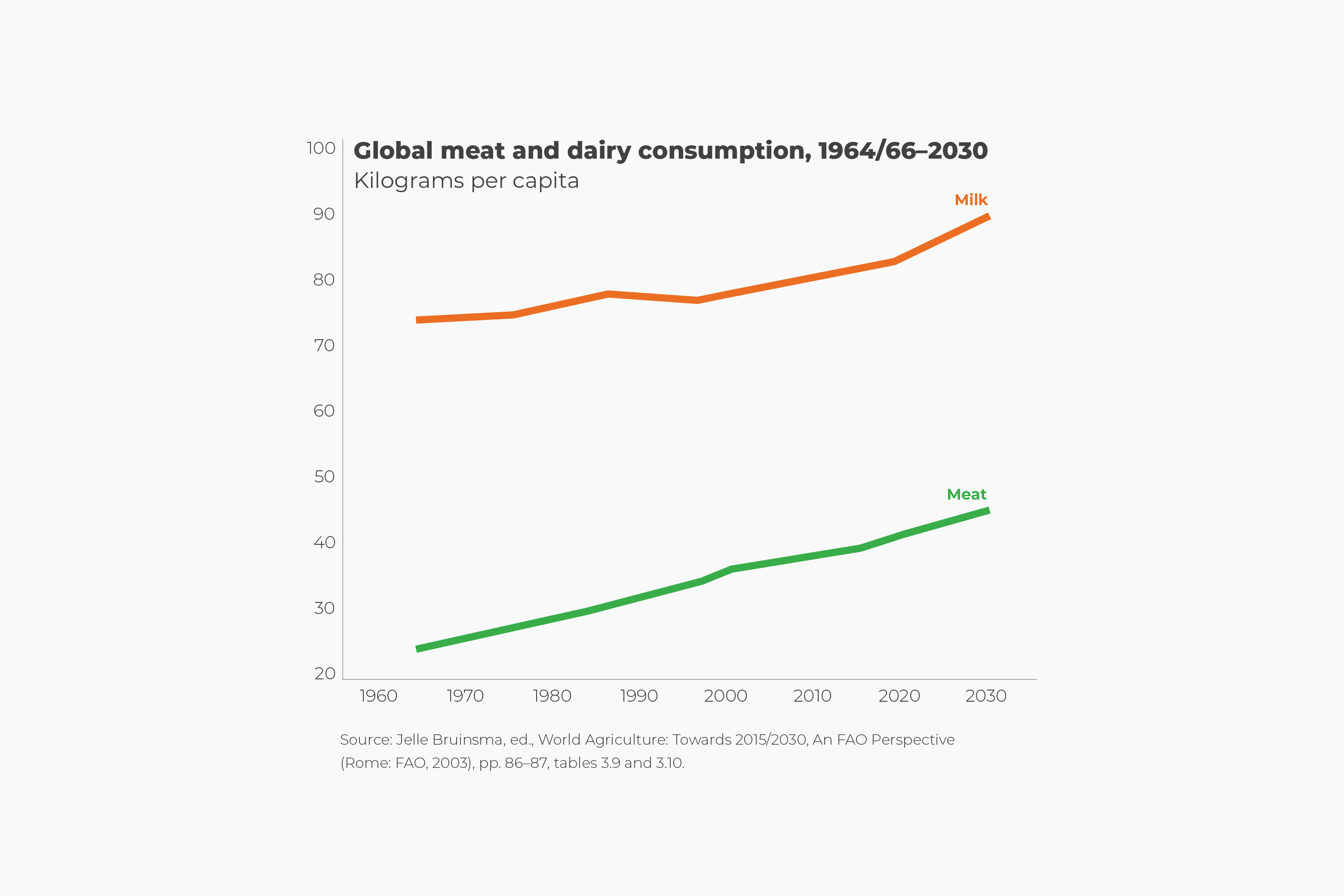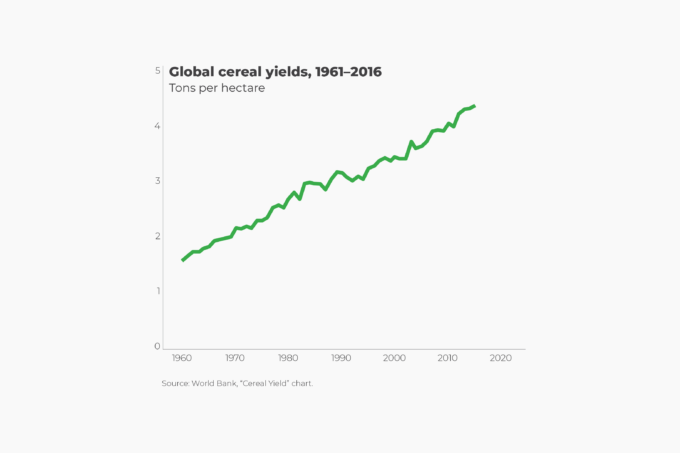People around the world are eating more meat and consuming more milk products. In 1941, Stanford University economist Merrill K. Bennett noted that as people become wealthier, they switch from simple starchy plant– dominated diets to those with more varied foods that include a range of vegetables, fruit, dairy products, and especially meat.
Currently, meat makes up 18 percent of global calories and 25 percent of global protein consumption. The Food and Agriculture Organization has documented the rising per capita consumption of meat and dairy products since the 1960s. The FAO reports that for the years 1964–1966, the global average consumption of meat—including beef, pork, sheep, goat, and poultry—was 24.4 kilograms (54 pounds) per person per year.
By 2015, that had increased to an annual average of 41.3 kilograms (91 pounds). The agency projects that average meat consumption will rise to 45.3 kilograms (100 pounds) per person per year by 2030. Dairy consumption is increasing too. The FAO reports that for 1964–1966, per capita consumption of dairy products averaged 74 kilograms (163 pounds) per year. That increased to 83 kilograms (183 pounds) by 2015 and is projected to rise to 90 kilograms (198 pounds) per person per year by 2030.
A 2017 FAO study also challenged some widely cited previous studies that claimed that it takes up to 20 kilograms (44 pounds) of grains to produce 1 kilogram (2.3 pounds) of beef. Contrary to those high estimates, the FAO researchers found that an average of only 3 kilograms (7 pounds) of cereals are needed to produce 1 kilogram of meat at the global level. The reason is 86 percent of the global livestock feed intake consists of fodder such as grasses and crop residues that are inedible by humans.








